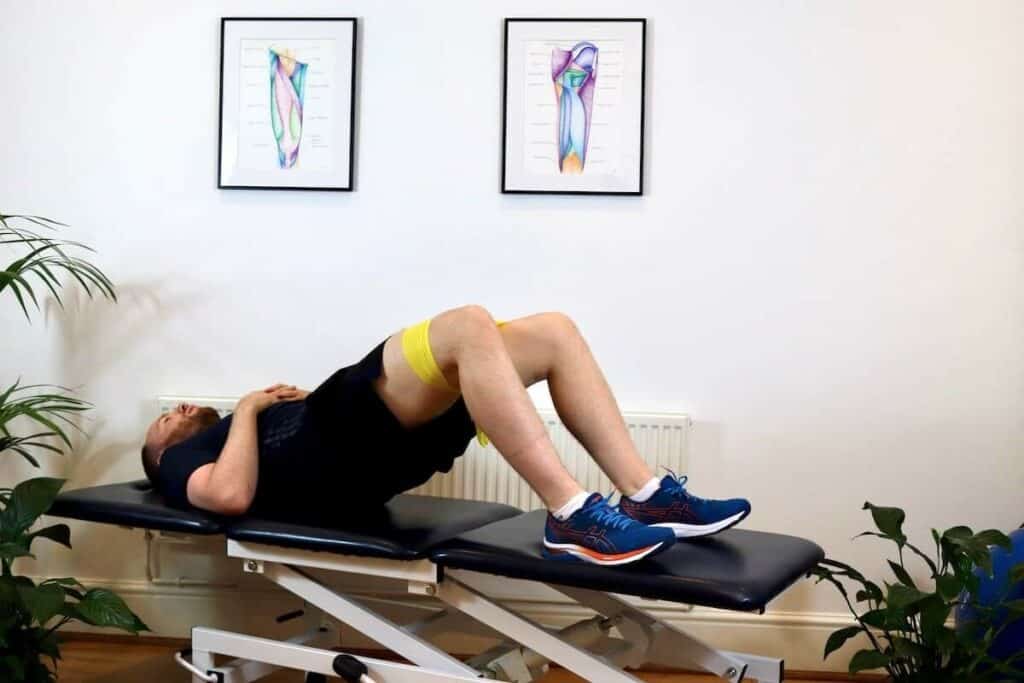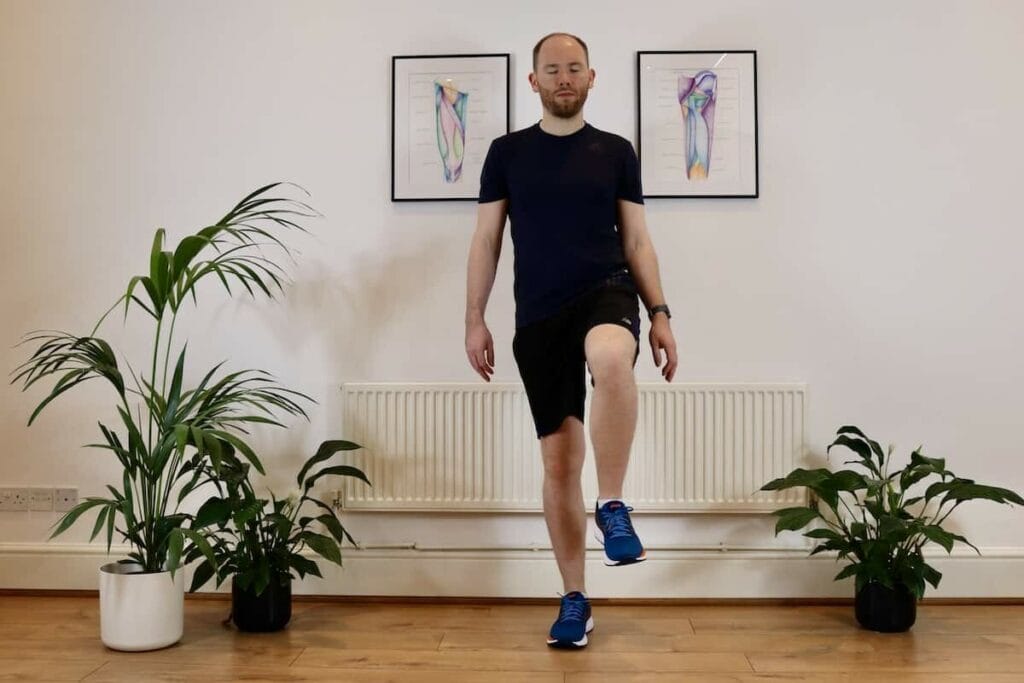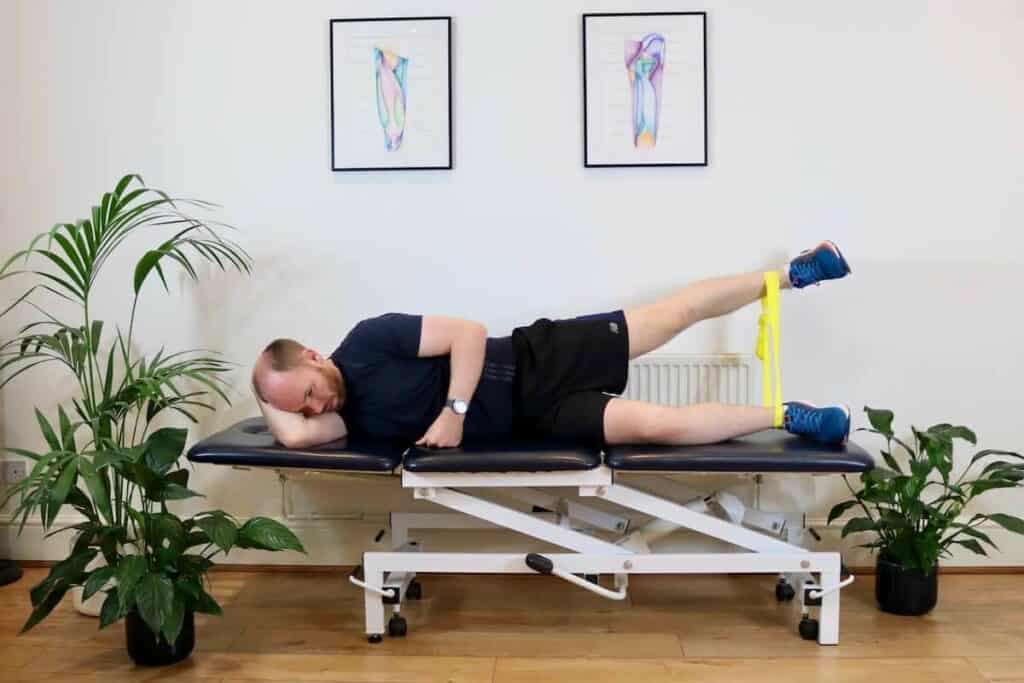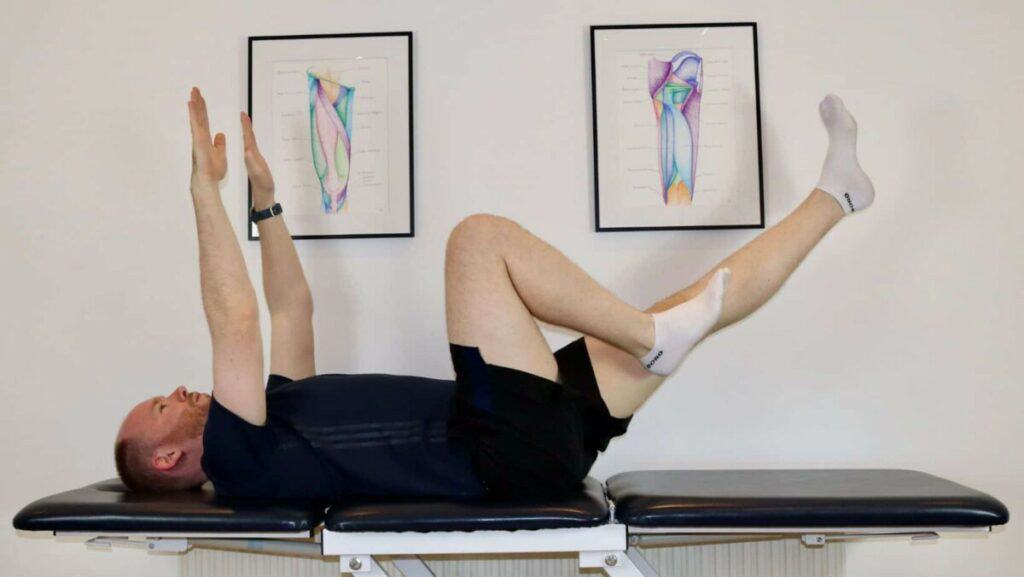Hip Labral Tear Exercises
- Best Asics Shoes for Flat Feet - October 25, 2024
- Best Running Shoes for Flat Feet - October 22, 2024
- Posterior Tibial Tendonitis - October 21, 2024
The labrum of the hip is a cartilage ring surrounding the hip socket. A tear can develop in the labrum due to an acute injury or repeated overload, often in conjunction with particular shapes of the hip that cause it to be at greater risk of injury.
In our related articles, you can read more about the Hip Labral Tear Anatomy and Symptoms and Treatment options.
The best rehabilitation exercises will depend on your particular injury and level of strength and fitness, so we advise seeing a physical therapist for a thorough assessment. From this assessment, a personal rehabilitation program can be prescribed, from which you are likely to get better and faster results. This article will show you some commonly useful exercises for recovering from a hip labral tear.
Hip Labral Tear Stretches
Hip mobility and flexibility are important, and tight muscles can often worsen symptoms. Here are some stretches that can help improve hip mobility. These stretches should be pain-free, so consult your physical therapist if you experience any pain.
Hip Flexor Stretch
Kneel on the floor with one leg; if your painful hip is your right hip, kneel on your right knee. Step the other leg through. Tilt your pelvis backwards to flatten your back and keep your upper body tall. Maintain the position of shifting your body forward to extend your hip.
Hold for 45 seconds and repeat every 2-3 hours.

Gluteal Stretch
Lie on your back with your knees bent and off the floor. If your painful hip is on your right side, cross your right ankle over your left thigh and pull your left thigh towards your chest. You should feel a stretch at the back of your hip in your gluteal muscles.
Hold for 45 seconds and repeat every 2-3 hours.

Hip Labral Tear Strengthening Exercises
Strengthening exercise can help reduce hip pain by improving the support around the joint and the efficiency of movement. You should do these exercises 3 times per week with a day of rest. These exercises should be pain-free, so consult your physical therapist if you experience any pain.
Bridge
The bridge exercise is great for strengthening the gluteal and hamstring muscles.
Lie on your back with your knees bent and feet on the floor. Tilt your pelvis backwards to flatten your back against the floor, then raise, curling up with one vertebra lifting off the floor at a time. Slowly lower back down. By adding a band around your thighs, you can apply pressure outwards to work the lateral gluteal muscles.
Perform 15 repeats for 3 sets with a 2-minute rest between.

Single-Leg Balance
Single-leg balance is a great exercise for strengthening the lateral gluteal muscles.
Stand on one leg and gain your balance. Ensure you hold your pelvis level without letting it drop to the side where the leg is lifted. You can progress with the time you can hold, and once you can do 60 seconds, you can stand on a Bosu or wobble cushion.
Perform 15-second holds progressing to 60sec, for 3 sets with a 10-20sec rest between.

Wall Sit
This wall sit exercise is great for strengthening the quadriceps and gluteal muscles.
Stand with your feet about 30-40cm away from the wall. Lean your back against the wall and bend your knees to lower down. You want your knees to be above your ankles but not overhanging them.
Keep your back flat against the wall and your weight on your heels. This helps you get your gluteal muscles working as well as your quads. The more bend in your knees, the harder it will be to hold. You may be advised to limit how far you flex your hips in the early stages.
Perform this as a 60-second hold for 3 sets with a 2-minute rest between.

Side Leg Lift – Post 6 weeks
This hip abduction exercise is great for strengthening the lateral gluteal muscles.
Lie on your side with your lower knee bent and top leg straight. Have your top leg ankle at hip height and a resistance band around your ankles. Keep your pelvis rolled forwards so your buttocks are on top, and slowly lift your top leg against the band’s resistance. Slowly lower your leg back to hip height.
Perform 15 repeats for 3 sets with a 2-minute rest between.

Dead Bug – post 6 weeks
This core exercise is a great exercise for strengthening the hip flexor muscles as well as the abdominals.
Lie on your back with your knees bent and feet on the floor. Tilt your pelvis backwards to flatten your back against the floor. Raise your arms and feet up with knees bent and arms straight. Reach one foot away by straightening your knee.
You can make this easier by keeping one foot on the floor or harder by reaching the opposite arm away with your leg.
Perform 8 repeats on each side, for 3 sets with a 2-minute rest between.

Related Articles:
FAI Exercises – Hip Labral Surgery – Best Treatment for Hip Labral Tear – Causes of outer hip pain
_______________________________________
We are specialists in Physiotherapy, with our clinic in Fulham, South West London.
We offer Online Appointments for £60 and Face-to-Face appointments for £85 in our clinics.
